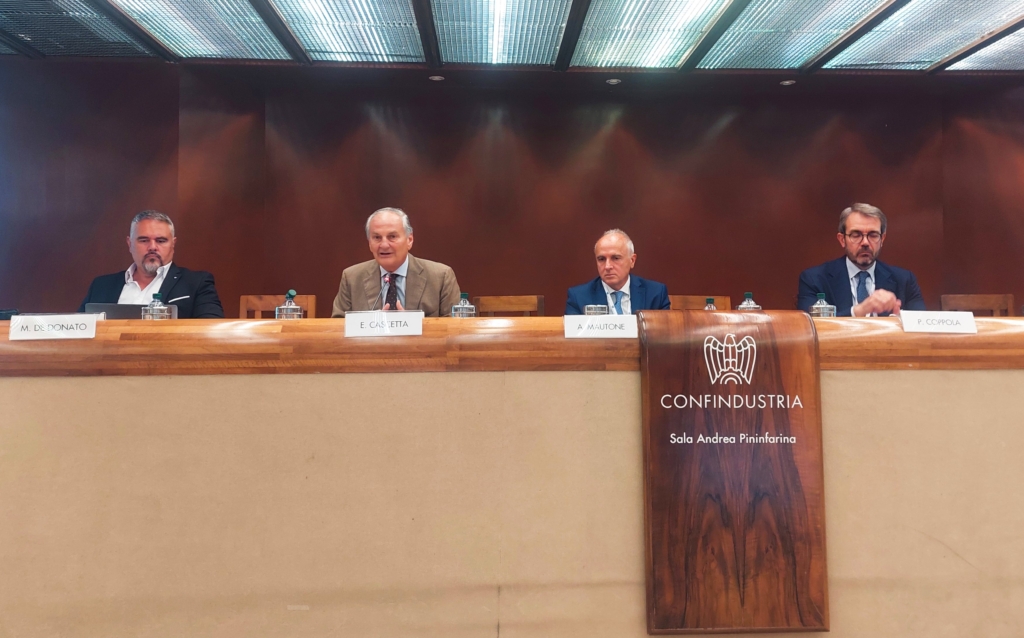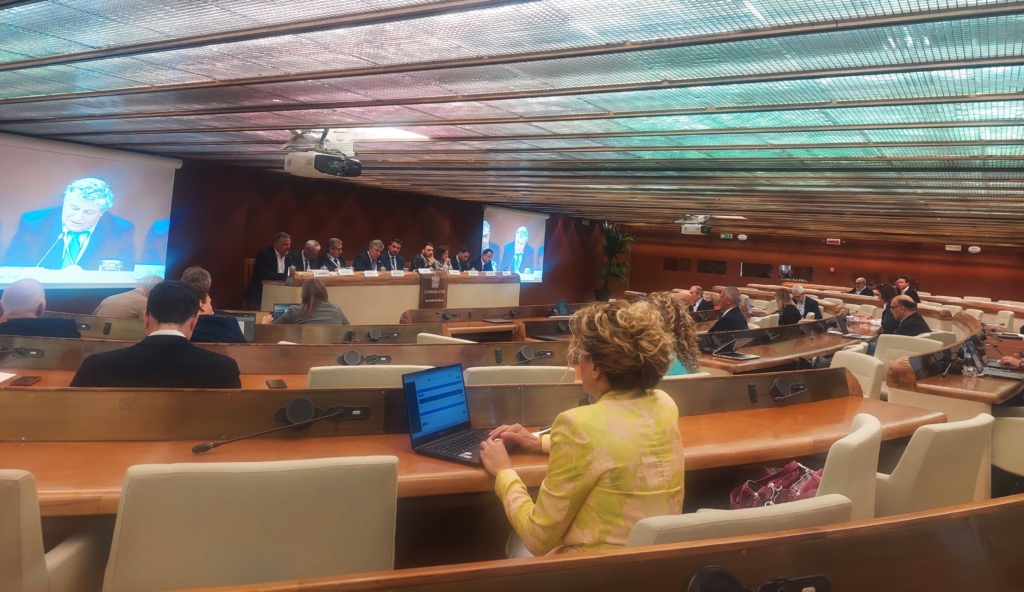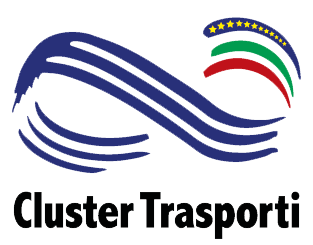TPL: the evolution of demand and technological urgency

Published 30 May 2025
The local public transport (TPL) sector is facing a period of profound transition, characterized by a persistent reduction in passenger numbers and the imperative to manage rapid technological evolution. All of this was discussed in the Sala Pininfarina of Confindustria, during the Conference organized by Cluster Trasporti, titled “Technological Innovations, Mobility Scenarios, and the Role of Public Transport Companies”.
In the era of the so-called “seventh transport revolution”, the one linked precisely to technological innovation, novelty is perceived as a great challenge for the sector, but also represents a significant opportunity for the evolution of the entire mobility system. Technological innovations, in particular, are considered essential to overcome the decline in demand; modernize services that are no longer adequate; increase safety, and decrease operating costs.
The event saw the participation of various sector operators, institutional representatives, and other stakeholders, gathered to discuss the future of mobility and the crucial importance of the companies managing public transport. At the center of the debate, therefore, were the strategies and innovations needed to create a modern TPL, defined as “2.0”, which represents the foundation of sustainable and resilient mobility.
TPL: an overview of investments in the sector in Italy
Italian TPL, which in 2019 recorded an annual turnover of approximately 12 billion euros and transported over 5.5 billion people, is undergoing a major transformation phase. Although the service offer returned to 2019 levels as early as 2021, the demand for public transport by road and rail is still 10% lower than pre-pandemic values.
Concurrently, a vast investment plan is underway in the transport sector in Italy, supported by instruments such as the National Recovery and Resilience Plan (PNRR) and the Complementary National Plan (PNC), with a share of 57 billion allocated to urban and metropolitan areas, including significant investments for fleet renewal (12 billion euros for buses and trains).
Currently, approximately 5.2 billion euros remain to be spent on the renewal of the bus fleet until 2033, of which 3.7 billion are allocated to the renewal of urban buses. The bus fleet for TPL counts 43 thousand vehicles, of which 85% are Diesel-powered and the average age is 10.3 years, well above the European average of 7.5 years.
The technological revolution towards “TPL 2.0”
As highlighted by the President of the Transport Cluster, Ennio Cascetta, during the opening of the proceedings, the collective transport sector is called to face a profound technological revolution, which involves the entire system, from vehicles to different energy sources, autonomous driving technologies, digitalization, and service management.
All innovations which, according to Cascetta, “would allow overcoming the user crisis that has characterized it in recent years. There is the opportunity to transform services where old scheduled transport does not meet the new mobility needs, improve safety on board, and reduce the production costs of services. In short, there is the possibility and necessity of a TPL 2.0.”
As Pierluigi Coppola from Politecnico di Milano subsequently specified, we are facing “a historical phase characterized by strong technological innovation; by a change in sensitivity towards the environment and by policies aimed at reducing the impact of transport. A phase in which we also observe a change in demand, a change in travel behaviors and lifestyles.”
To respond to these new needs, it is necessary to rejuvenate old models and adopt the opportunities offered by new technologies, particularly those related to digital technologies, from artificial intelligence to decarbonization to the transformation of mobility services, which are considered capable of causing radical changes in supply and demand.
Another important issue for the sector is investments; a topic highlighted from the outset by Angelo Mautone, TPL Director at the MIT. “This is technically one of the most deeply felt points by the general directorate of TPL. We need structural funding, not sporadic funding, as has happened in recent years with the PNRR, with the complementary plan, with the strategic plan for sustainable mobility, through interventions that, however, create criticalities for the sector, and also for the production chain, precisely in terms, forgive the comparison, of indigestion.”
The evolving role of companies and the debate

In light of this scenario, passenger transport companies are called to transform, evolving into integrated mobility operators and technology managers. Specifically, they must be able to seize the new business opportunities that arise, while managing all associated risks.
The round table on the future of mobility and the development of technologies and means for TPL was also a focal point of the roundtable, moderated by Massimo De Donato (Cluster Trasporti) and attended by leading figures in the sector, including Angelo Costa (Agens), Massimo Nitti (Asstra), Massimo Locatelli (ANAV Lombardia), Gianpiero Mastinu (Politecnico di Milano), Dario Ferrillo (Almaviva), Gabriele Vargiu (Iveco Group), Antonella Trombetta (Hitachi), Nunzio Micalizzi (Leonardo), and Gaetano Fusco (MOST Spoke 9).
From the discussion emerged that the approach to changes must be rational and integrated, and requires significant investments. Technological transformation has a significant impact on mobility; it is revolutionizing vehicles with sensors, driver assistance systems, and progressive autonomous driving. Furthermore, it is profoundly changing services through the monitoring and management of fleets and demand, the use of video surveillance and electronic ticketing systems, and the interaction between vehicle and environment.
New services for the energy transition of TPL
Faced with the seventh transport revolution, as Costa highlighted, “we must welcome, but also ride the wave of change.” For this reason, today new types of services, such as Mobility as a Service (MaaS), which integrates different transport modes, and on-demand services (Demand Responsive Transit – DRT), are being experimented with to respond to the needs of a more distributed and less concentrated mobility demand.
Another topic addressed was that of energy transition and bus fleet renewal. The goal of decarbonization requires the modernization of circulating vehicles and the use of low-environmental impact fuels. In this regard, the adoption of an “eco-rational” approach was discussed, considering the real costs of electric and hydrogen buses compared to diesel ones.
In this context, specifically, the relevance of traditional technologies using renewable fuels, such as HVO or biomethane, was underlined because they allow replacing a larger number of obsolete vehicles with the same investment, achieving CO2 emission reductions (WtW) comparable to those of electric buses. The need to develop new skills to manage fleets with different energy sources was also highlighted, a particularly relevant challenge for small and medium-sized companies.
Technological innovation: the impact on work and the issue of sustainability
During the conference, particular emphasis was placed on the impact of new technologies on the world of work, highlighting the importance of personnel retraining to acquire digital skills. The spread of these new technological possibilities will in fact lead to the creation of new professional roles, for example, related to data management and cybersecurity. To address these changes and facilitate the transition of companies from simple TPL managers to mobility enterprises, it is also essential to act on rules, resources, investments, and innovation in this case.
In the mobility of the future, to guarantee the sustainability of businesses, it will be necessary to strategically renew the fleet based on objectives, develop new skills, promote new mobility models, such as eco-driving, and offer flexible and integrated services, alongside traditional scheduled ones, in order to respond to the evolution of demand and maintain market share.


